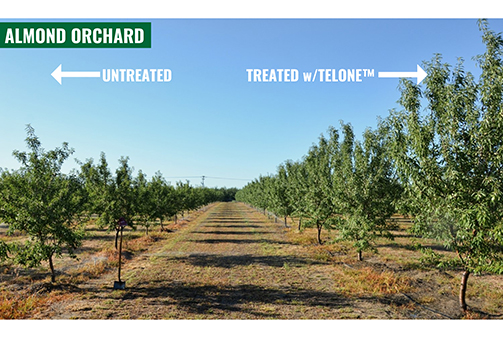How Growers Can Get Paid for Coronavirus Loss
The saying “Show me the money” is more than just a worn-out, decades-old catchphrase. It’s unfortunately become a rallying cry during these times of uncertainty brought on by the coronavirus pandemic. Farmers and ranchers have been feeling the impact, but aid is on the way as U.S. Secretary of Agriculture Sonny Perdue has announced details of the Coronavirus Food Assistance Program (CFAP), which will provide up to $16 billion in direct payments.
Beginning May 26, USDA, through the Farm Service Agency (FSA), will be accepting applications from agricultural producers who have suffered losses.
“America’s farming community is facing an unprecedented situation as our nation tackles the coronavirus. President Trump has authorized USDA to ensure our patriotic farmers, ranchers, and producers are supported and we are moving quickly to open applications to get payments out the door and into the pockets of farmers,” Perdue stated. “These payments will help keep farmers afloat while market demand returns as our nation reopens and recovers.”
According to USDA, farmers and ranchers will receive direct support, drawn from two possible funding sources. The first source is $9.5 billion in appropriated funding provided in the Coronavirus Aid, Relief, and Economic Stability (CARES) Act to compensate farmers for losses due to price declines that occurred between mid-Jan. 2020 and mid-April. It provides support for specialty crops for product that had been shipped from the farm in that time period but subsequently spoiled due to loss of marketing channels.
The second funding source uses the Commodity Credit Corporation Charter Act to compensate producers for $6.5 billion in losses due to ongoing market disruptions.
For eligible specialty crops, the total payment will be based on the volume of production sold between Jan. 15 and April 15, the volume of production shipped, but unpaid; and the number of acres for which harvested production did not leave the farm or mature product destroyed or not harvested during that same time period, and which have not and will not be sold. Specialty crops include, but are not limited to, almonds, beans, broccoli, sweet corn, lemons, iceberg lettuce, spinach, squash, strawberries, and tomatoes. A full list of eligible crops can be found on farmers.gov/cfap. Additional crops may be deemed eligible at a later date.
There is a payment limitation of $250,000 per person or entity for all commodities combined. Applicants who are corporations, limited liability companies or limited partnerships may qualify for additional payment limits where members actively provide personal labor or personal management for the farming operation.
Producers also will have to certify they meet the Adjusted Gross Income limitation of $900,000 unless at least 75% or more of their income is derived from farming, ranching or forestry-related activities. Producers must also be in compliance with Highly Erodible Land and Wetland Conservation provisions.
“Given the scope of this crisis, we knew the initial funding would be insufficient to meet the need of family farms, said Kam Quarles, CEO of the National Potato Council, in reaction to the announcement. “Based upon the limited resources announced today under this direct payment program, the potato industry is strongly urging Congress to act rapidly to provide more resources and flexibility to fill this huge gap and maintain producers’ livelihoods.”
Producers can apply for assistance beginning May 26. Additional information and application forms can be found at farmers.gov/cfap. Producers of all eligible commodities should apply through their local FSA office. Documentation to support the producer’s application and certification may be requested. FSA has streamlined the signup process, so an acreage report is not required at the time of application and a USDA farm number may not be immediately needed. Applications will be accepted through Aug. 28.
To ensure the availability of funding throughout the application period, producers will receive 80% of their maximum total payment upon approval of the application, according to USDA. The remaining portion of the payment, not to exceed the payment limit, will be paid at a later date as funds remain available.
More information can be found at farmers.gov/coronavirus.









